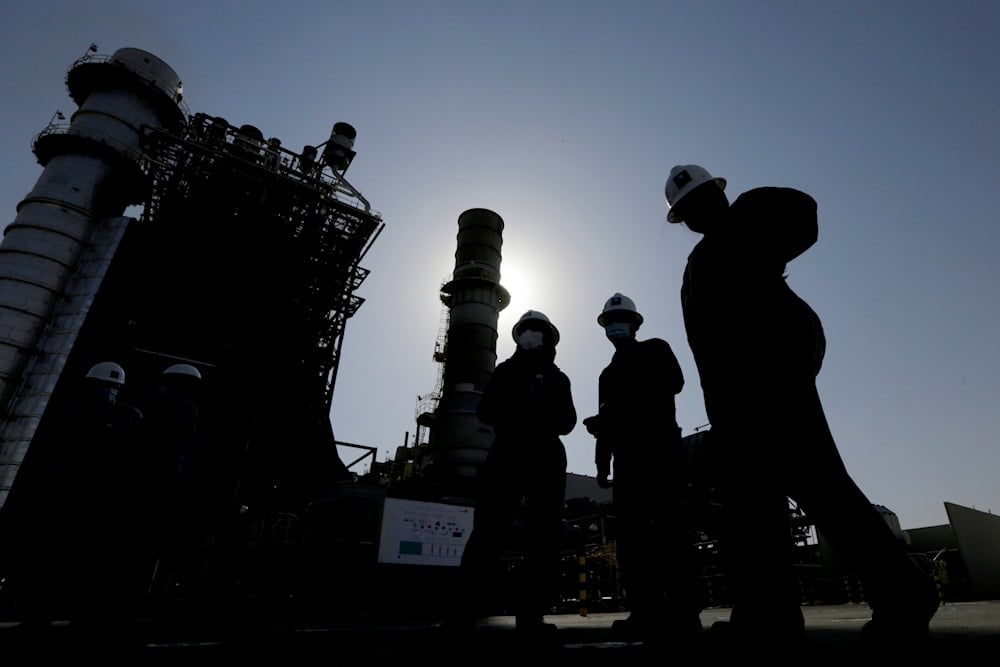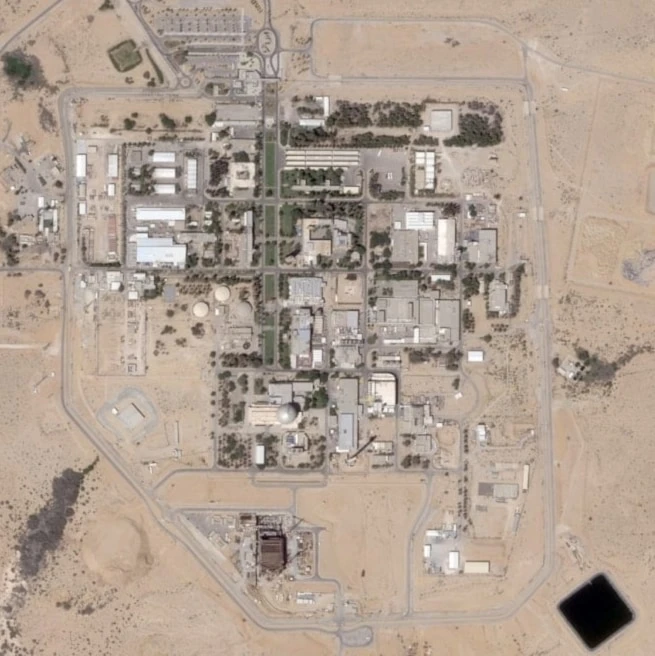KSA’s oil dependence persists despite vision 2030 promises: Bloomberg
Saudi Arabia's push to diversify under Vision 2030 falters as oil still accounts for most revenue, with deficits and rising breakeven prices fueling concern.
-

Saudi Aramco engineers walk in front of a gas turbine generator at Khurais oil field during a tour for journalists, outside of Riyadh, Saudi Arabia, on June 28, 2021. (AP)
Nearly a decade after Crown Prince Mohammed bin Salman pledged that Saudi Arabia could wean itself off oil by 2020, the kingdom’s economic lifeline remains tied to petroleum revenues, arguably even more so today, according to new indicators. The initial promise, backed by large-scale investments to steer the country into a diversified future, has not fully materialized.
MBS’s drive to cure what he once called an “addiction” to oil has indeed triggered profound transformations. More Saudi women are part of the workforce, tourism is expanding, and industries like electric vehicles and semiconductors are slowly taking root. However, the pace of economic diversification under the Vision 2030 initiative has fallen short of expectations.
Bloomberg Economics reports that the kingdom’s fiscal breakeven oil price has risen to $96 a barrel, higher than it was a decade ago. If the domestic investments made by the sovereign wealth fund are included, the effective breakeven jumps to $113. In contrast, Brent crude has averaged only $76.50 this year, pushing the government to issue more international bonds and consider selling assets to plug fiscal gaps.
“The core aim of Vision 2030 is to cut oil dependence,” said Ziad Daoud, Bloomberg Economics’ chief emerging-markets economist. “By that measure, the kingdom has become more reliant on oil.”
Higher prices are needed to balance accounts
Beyond the fiscal budget, Daoud notes that the country now needs higher crude prices to balance its current account due to ballooning public spending. “This is mainly because of surging public spending,” he said, “not just on glitzy mega-projects but also due to implicit popular pressure to ramp up outlays when oil rises.”
Historically, Saudi governments have increased expenditures when oil revenues were high, an approach officials had pledged to abandon. Finance Minister Mohammed al-Jadaan recently insisted that authorities don’t “even look at the oil price” anymore.
Despite reform rhetoric, oil still generates about 60% of government income and makes up more than 65% of national exports. Officials say they will cut spending in 2025 after overspending in 2024, largely due to capital pouring into high-profile projects like Neom and a massive cube-shaped skyscraper in Riyadh.
A spokesperson from the Finance Ministry told Bloomberg, “Saudi Arabia continues to advance the Vision 2030 agenda with determination, despite global economic headwinds and regional volatility… The structural transformation of the Saudi economy is not a short-term project. It is a generational endeavor that is already delivering measurable progress across key sectors. Saudi Arabia’s fiscal position remains robust.”
Non-oil sector grows but deficits persist
The non-oil economy expanded by over 4.5% in Q1 2025, aligning with state targets and now comprises over half of the nation’s $1.1 trillion GDP. Revenues from this sector surged to $134 billion in 2024, up from $50 billion in 2016. Still, rising expenditures have kept the budget in deficit for nine consecutive quarters.
“Given the sharp increase in government spending over the last few years and the fall in the oil price this year, a more cautious fiscal stance is prudent,” said Monica Malik, chief economist at Abu Dhabi Commercial Bank. “Saudi Arabia has strong fiscal buffers, though these could be eroded quickly.”
The Finance Ministry responded by saying the recent surge in spending is largely due to early-stage capital expenditures for Vision 2030 projects. “As these transformative initiatives reach full operational capacity, they will generate returns and contribute to the fiscal position and the economy,” the ministry said.
IMF predicts prolonged deficits
According to the International Monetary Fund, Saudi Arabia’s current account is projected to remain in deficit through the end of the decade. Ziad Daoud called this a major shift, noting that the country is transitioning “from an exporter of capital to a seeker of funds.”
The government’s Aa3 credit rating from Moody’s, equal to that of the UK and France, has allowed it to raise nearly $15 billion this year in global bond markets, excluding over $5 billion issued by the Public Investment Fund. But foreign direct investment is lagging behind government aspirations. While FDI reached $6 billion in Q1, the target for 2025 is more than six times higher.
“On the economic side, we should not dismiss that there has been huge improvement,” said Jason Tuvey, deputy chief emerging markets economist at Capital Economics. “But they are never truly going to ever get away from oil. It’s a question of whether they can reduce their reliance on oil to drive fiscal policy. That’s achievable.”

 5 Min Read
5 Min Read










